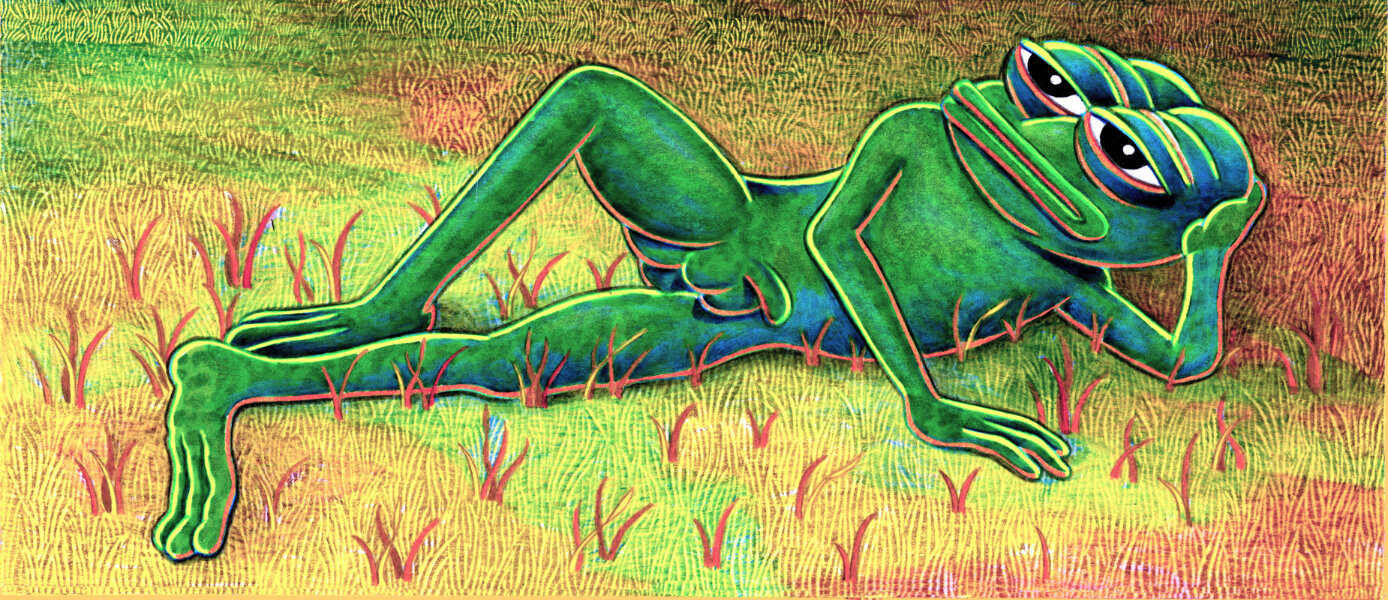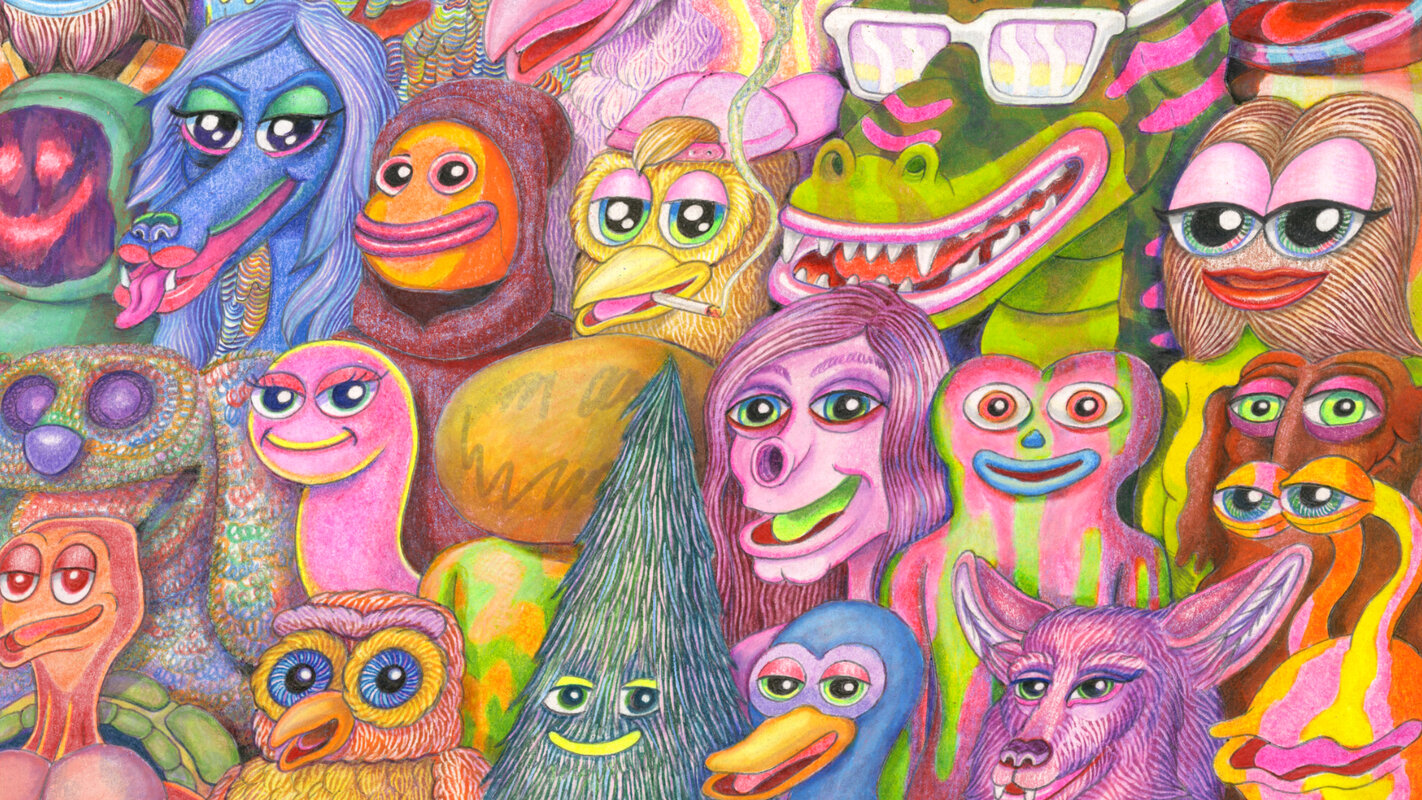
Matt Furie: Embracing Duality
Matt Furie lives in California with his wife Aiyana and their daughter, creating characters that bring together his inner child, inner teen-angst and a connection to a higher ‘self’. Matt’s intricate, goofy psychedelia communicates the happiness that drawing brings him. His comic series Boys Club is considered a classic of slacker humor, with its peace-loving character Pepe the Frog having become a global meme. After publishing Mindviscocity with Fantagraphics in 2020, Matt’s most expansive and sumptuous book to date, he recently released Trigore Labyrinth, a heavy metal mutant facegasm in collaboration with his friends Will Sweeney and Skinner.
Pictoplasma: You seem to be very calm, and it’s easy to imagine you sitting and taking your time do one small drawing. How do you come to your ideas, and how does the process of drawing work for you?
Matt Furie: I'm playing the long game, so I'm not trying to rush into anything, and I think there's a lot of power in just taking your time with stuff. I think we try to rush in and try to get established. I've always been happy to be an artist because I don't have to depend on my physical body too much. I could just slouch over a desk and like, rip a fart, drink some tea and draw all day. So, it's an ideal situation.
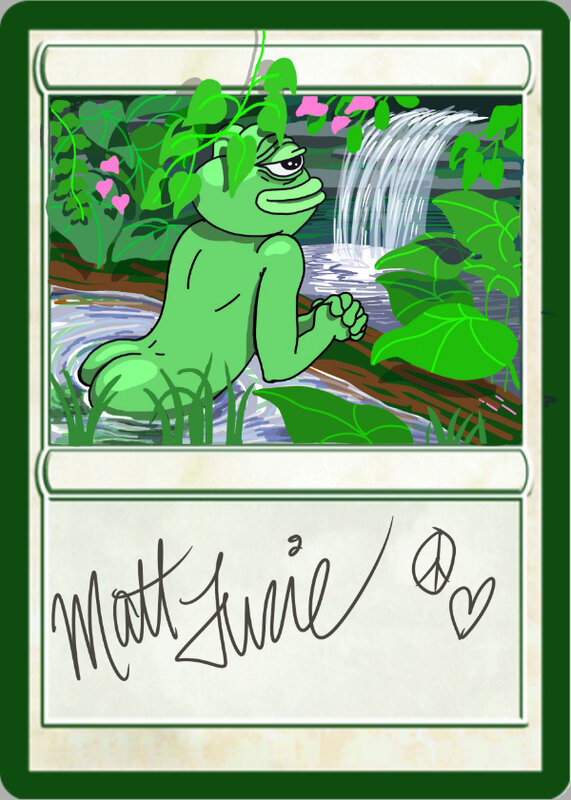
“One of the superpowers of being an artist is that you stay in touch with your childlike wonder”
How did you find that confidence to not rush around and feel as though you have to prove too much?
Well, one of the superpowers of being an artist is that you stay in touch with your childlike wonder, or whatever. So, I just try to maintain the state of mind that I had when I was a young boy and I was bored, and I could just sit there and draw, for instance, a bunch of hamburgers fighting the vegetables. You can just do it for yourself and indulge in whatever weird thing you want to draw.
Did the drawings you made as a kid look similar to the ones you do today?
Well, yeah, kinda. When I was a kid, I drew more dinosaurs and dragons, and a lot of medieval weapons, and maybe some little war scenes and stuff. So, it's kind of similar.
But was the focus of the drawing already there? Or was it wilder or looser?
No, I was always pretty detail oriented, so I would sit there and sketch it out. I would draw a lot of muscular dragons with battle axes. I think I did a lot of that!
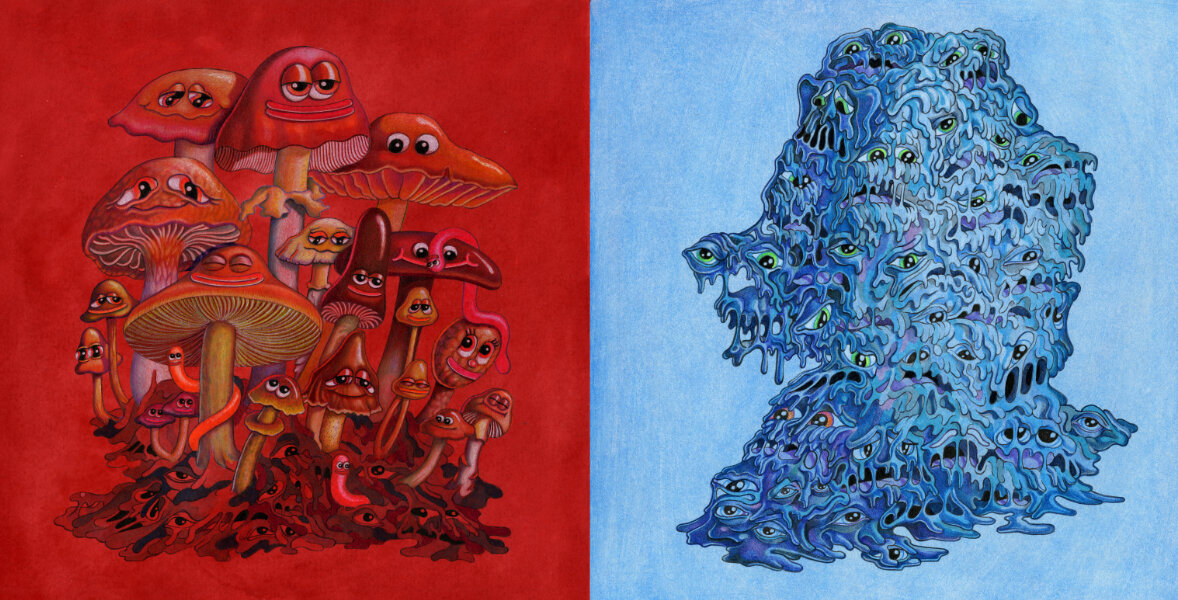
Did you then go on to art school? What was your path? Your life as an artist basically started with Pepe and Boys Club, but what happened between drawing dragons and starting Boys Club, around 15 years ago?
Well, my parents really wanted me to go to school. It was part of the divorce settlement that I went to school. Therefore, I didn't have a choice. I wanted to learn some fundamentals that I could apply to my sketchbook drawings, so I went to a liberal arts college and studied figure drawing and painting and colour theory and stuff like that. I just wanted to internalise as many fundamentals as I could so that I could apply them to my shitty monster drawings.
And that worked well! But then, after college or art school, how did you move out into the world?
I'm from Ohio, originally in the Midwest of the United States, and a buddy of mine that I went to college with – Nasty Neff – he wanted to go to San Francisco to follow a girlfriend, and I had a Buick LeSabre that could get him there. So, we loaded all of our CDs into my car – we listened to CDs back then – and we headed out for San Francisco. I figured that if I was in a big city, a cool, artsy city like San Francisco, then that would help.
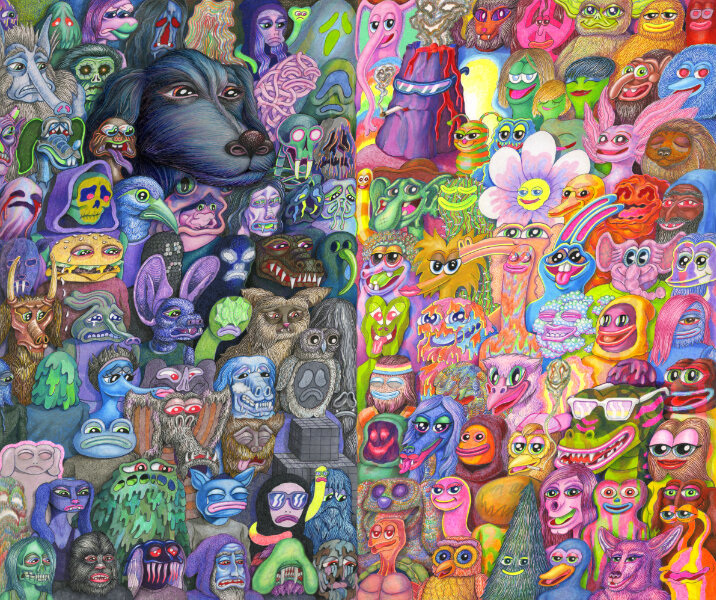
“I'm in that phase of my life where I'm the middle-aged guy dancing with a six-year-old, and I'm cool with that”
Another element in your life seems to be rave culture and all things trippy, so we can imagine how you spent part of your time back then. A key part of rave culture is, of course, that you don't rave alone. As the whole Boys Club thing is about friends, is there a connection?
Yeah. We were just very consciously aware of ourselves and what we were enjoying. I feel lucky because I knew that I was young and in a vibrant city, and I was going out partying and stuff, and the art kind of expresses that. But even more important than the art, I think, is nurturing and maintaining your friendships, because there’s an art to that too. I would venture to say that that’s more important than sitting alone and drawing. Actually interacting with your friends. It’s the art of living, you know?
When you're young and you party, there's a certain way to live out your friendships, and then you get older, you have a family. How do you maintain those old friendships?
A lot of my friends have kids now and other responsibilities. I suppose I carry on that spirit of peace, love, unity and respect through my family, with my daughter. I'll just turn on some music and we'll dance together. I'm in that phase of my life where I'm the middle-aged guy dancing with a six-year-old, and I'm cool with that. I think my best habit is probably being present with my daughter. I think that's a real gift, to really just be with her and not be thinking about my projects and stuff.
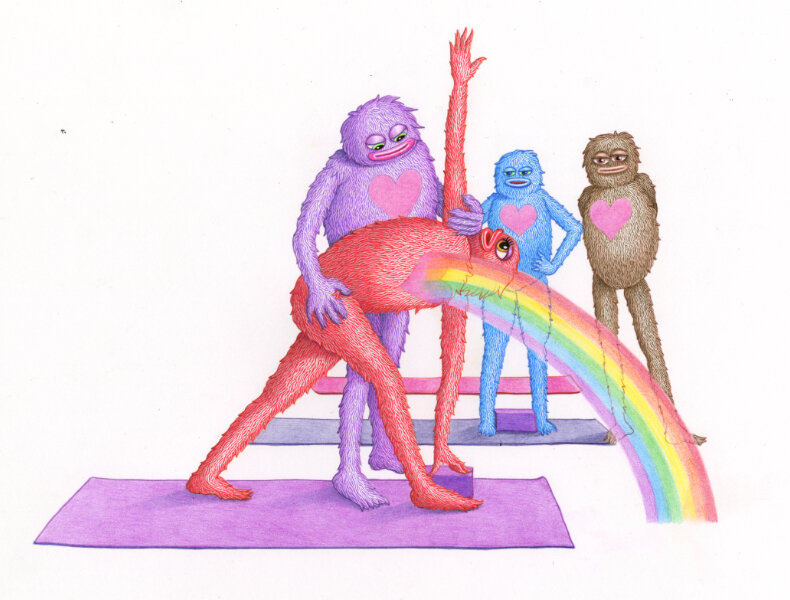
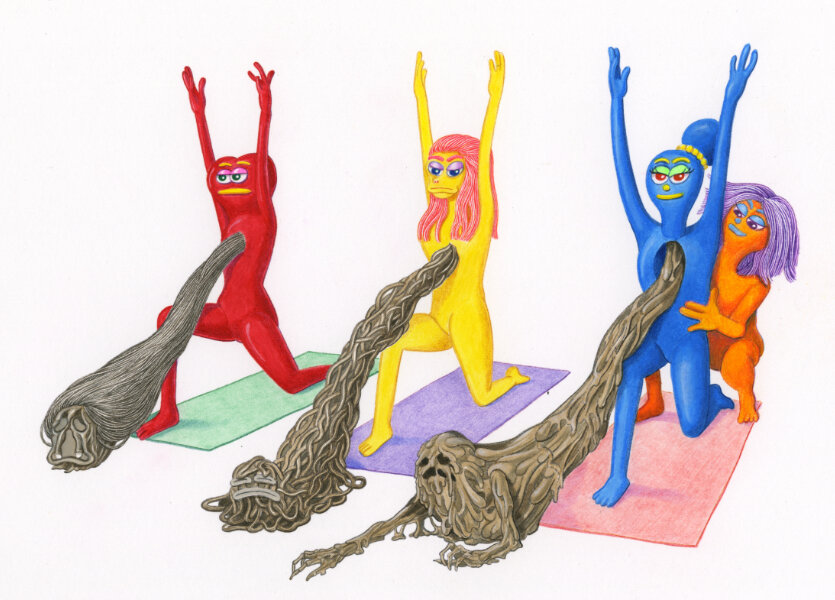
As you are so much focused on your work, drawing for days, being in the moment, would you say your work is like meditation? And can you pin down what happens in your head when you're drawing?
I get stuck in a pattern of thought, or maybe a pattern of negative thinking, or I get stuck with a good idea that I feel is positive and really have to get out there. It starts with that seed of an idea, whether it's negative or positive. Once I have that concept down, the meditative part comes more from the craft of doing it. I'll get the idea down, an idea that's typically been spinning around for some time. Or I'll wake up after a dream, and I like to try to use characters to express abstract ideas that I have.
So yeah, the actual idea part isn't necessarily meditative, but sitting down and drawing it out is the meditative part. Coming up with the concept is also kind of meditative, because it's trying to get me out of some pattern of thinking that I could be trapped in. It's a way to get free. I'm trying to release the idea, and that release is therapeutic.
“It's hard to psychoanalyze yourself, but I do believe that art has the power to be therapeutic.”
Is it a recurring thought, or is it more like a thought pattern, and you are immersed in the middle of it?
That's a good question. It's hard to psychoanalyze yourself, but I do believe that art has the power to be therapeutic. I just get stuck thinking about how the sun is shining, the plants are growing, the flowers are blooming, the air is fresh, but at the same time, I’m tripping out about factory farming or the state of the world or even just ageing or the inevitable doom of life, or whatever. So, to release myself from some of that negative thinking, I come up with a character to represent these thoughts, whether it's Ronald McDonald with some chainsaws for hands or a goofy frog. That’s just the way that I cope.
“Pepe the Frog, or the bootleg version of my character, was the precursor to the NFT thing”
Who would have thought that 2021 would mark the breakthrough for some artists to make money with digital images. How have you entered the world of NFTs? Is your experience of it good or bad?
Well, if anybody feels sorry for whatever situation I had during the Trump administration, that's over now, and I'm doing well. My cousin, Frankie is a technical guy. He's into techno music and stuff. And, you know, I'm in a unique situation where my frog character kind of took on a life of its own on the internet. It became memed. Pepes were on the blockchain before this more recent NFT boom. So actually, Pepe the Frog, or the bootleg version of my character, was the precursor to the NFT thing that we're seeing happening right now. I’d just gone through that situation and was hardwired to participate in that. A lot of people were reaching out to me during that specific time, and I ignored it. I actually put my email on vacation mode because I didn't even want to deal with it. But then my cousin, who I trust and who's my friend, was like, “Hey, man, let's try to do some NFT stuff.” He educated me more about it, and I worked with him and did a collectible project, and it was fun.
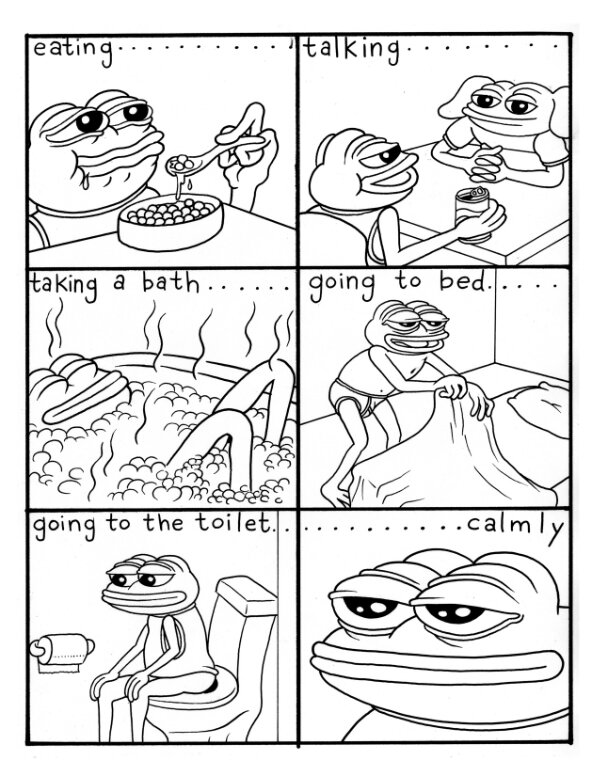
What platform did you use?
We built our own front-end marketplace based on OpenSea, which is kind of like the eBay of NFTs. But my cousin is technically skilled, and he crafted our own interface for people to auction the NFTs. I think that NFTs – at least the way the marketplace is now – prey on people's gambling instincts, because there are auctions, and there's a lot of nerds out there with a lot of cryptocurrency that they want to flex. I don't know, it's a whole different world. It's interesting. But the cool thing about my situation was that I came up with a collectible project that didn't change the way I did art. It was a way for me to draw a bunch of goofy ass heads and sell them as digital tokens.
And these were all editions?
They were all one of one.
So, it was an auction place, but only of your work?
It's called PEGZ – pegz.fun.
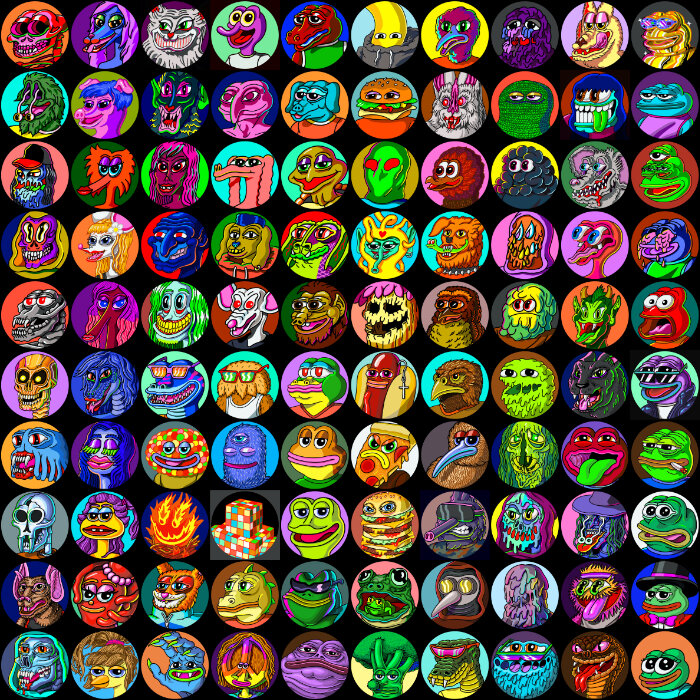
Didn’t you feel that if not enough people showed up, it would be risky?
Well, it didn't really matter because the bidding started at 1 Ethereum, and at that time, 1 Ethereum was worth over $2000. So even if I sold it for 1 Ethereum, it was still $2000 for a digital token, so it was impossible to lose on that.
Do you have any plans for the future, or is that it for you and NFT?
I'm definitely taking a break right now. But yeah, I would like to return. I'm kind of excited about the controversy of it and the possibilities and how there's this metaverse out there of people that are ‘online people’, but they really identify with their avatars or with cultivating three dimensional others. It's very psychedelic, really, because you have to take a leap of faith towards things that don't exist but which you can create.
It's almost like it's a window into some kind of collective imagination that is also monetised. So, it's very capitalistic, it's very utopian and it's very controversial. In this sense, it’s a fun place to to mess around in.
Interview by Pictoplasma published in Pictoplasma Magazin – Issue 2: Character Care, 2022
